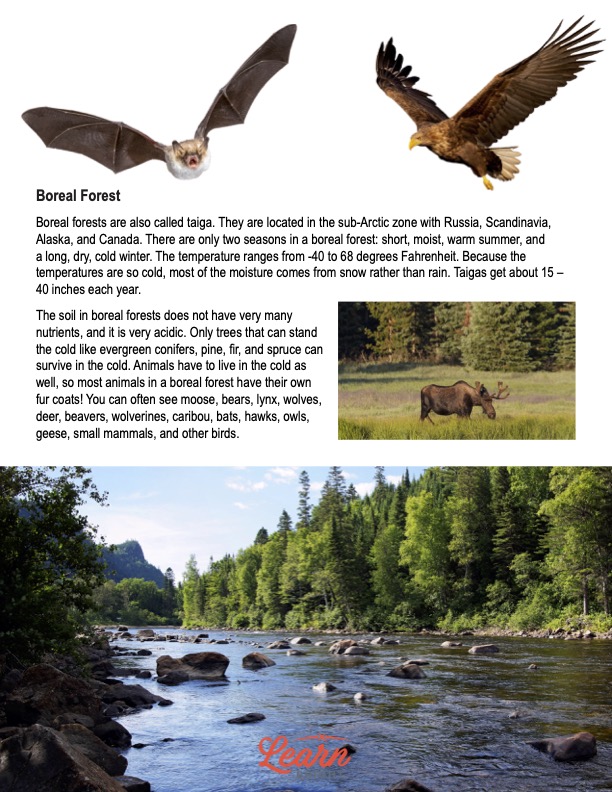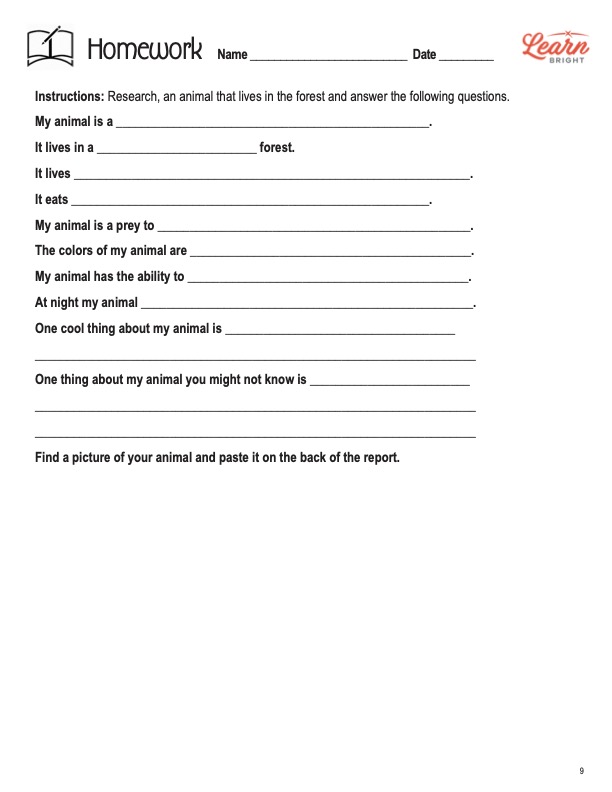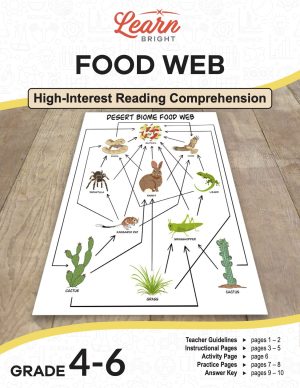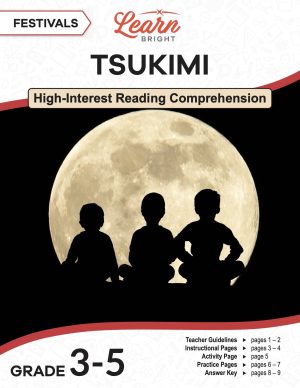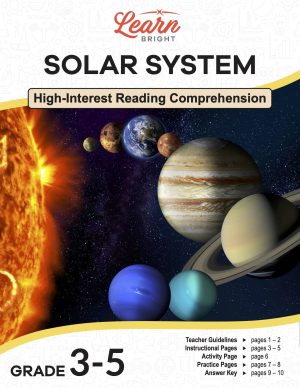Description
What our Forests STEM lesson plan includes
Lesson Objectives and Overview: Forests STEM builds on information from other related lessons. It explores the different types of forests and the animals and plants that call them home. Students will identify the traits of these different forest types and will be able to list the living things within them. This lesson is for students in 4th grade, 5th grade, and 6th grade.
Classroom Procedure
Every lesson plan provides you with a classroom procedure page that outlines a step-by-step guide to follow. You do not have to follow the guide exactly. The guide helps you organize the lesson and details when to hand out worksheets. It also lists information in the yellow box that you might find useful. You will find the lesson objectives, state standards, and number of class sessions the lesson should take to complete in this area. In addition, it describes the supplies you will need as well as what and how you need to prepare beforehand.
Options for Lesson
The “Options for Lesson” section on the classroom procedure page lists several suggestions of ideas and activities that you can add to the lesson. You could incorporate any number of them, or none at all. A few of these ideas deal specifically with the lesson activity. Instead of labeling the tracks, students could guess which animal made the tracks. (You might have to write a list on the board of all of the possibilities from which they can make their guesses.) The student who guesses the most correct answer wins a prize. Another option is to invite a forester or someone from the Arbor Day Foundation to speak to the class and answer any questions they have about forests. You could also contact the Arbor Day Foundation to see if you can get some trees to plant around the school or in a particular neighborhood.
Teacher Notes
The teacher notes page provides an extra paragraph of information to help guide the lesson. It lists a number of other Learn Bright lesson plans that cover this topic. You could benefit from teaching these lesson at the same time. You can use the blank lines to write down any other ideas or thoughts you have about the topic as you prepare.
FORESTS STEM LESSON PLAN CONTENT PAGES
Tropical Forests
The Forests STEM lesson plan contains a total of three content pages. The first page starts off by describing the habitat of a forest in general. Forests have lots of trees, and these habitats exist all around the world. They are pretty widespread, and they are incredibly important to the Earth because they produce oxygen. All living things need oxygen to survive. Thankfully, forests cover a third of the Earth with their combined 3 trillion trees!
Scientists classify forests into three general categories according to their distance from the equator: tropical, temperate, and boreal. Another name for a tropical forest is a rainforest because they receive at least 80 inches of rain every single year. These areas also only experience two seasons: rainy and dry. Tropical forests are the closest to the equator, so the temperatures of these habitats remain around 60° Fahrenheit all year long.
Tropical forests boast a lot of diversity when it comes to the plant and animal species that live in them. In fact, they contain millions of species, over half of all the species on the planet. Some of the plant species that thrive in rainforests include broadleaf trees, moss, ferns, and orchids. Trees grow in dense patches, and the leaves and branches often block the light of the sun from reaching the forest floor. The animal species here include monkeys, snakes, and frogs.
Temperate Forests
The type of forests that are a little farther from the equator are called temperate or deciduous forests. You can find this kind of habitat in North America, the northeastern part of Asia, and Europe. Unlike tropical forests, temperate forests experience all four of the seasons—winter, spring, summer, and autumn. The temperatures range from -22° to 86° Fahrenheit, and these areas receive between 30 and 60 inches of precipitation (rain or snow) each year.
Students will learn that the reason this type of forest is also known as deciduous is that it contains deciduous trees. Deciduous trees are the primary type of tree that one would find in a temperate forest. They shed their leaves in the autumn months before winter. There are also coniferous trees like pines and firs.
The soil of this kind of forest is incredibly fertile. This is because the leaves that fall each year compost and fill the soil full of nutrients. Some of the tree species that are common to a temperate forest include oak, beech, maple, willow, and hickory. The animals that live in this habitat include rabbits, deer, wolves, and bears. These and other animals have to be able to live and thrive in both cold winters and hot summers.
Boreal Forests
Finally, students will learn about the third main type of forest habitat. Boreal forests can also go by another name—taiga. These are the farthest away from the equator and therefore have the lowest temperatures. The temperature ranges from -40° to 68° Fahrenheit. You would find this kind of habitat in the sub-Arctic zone in Russia, Scandinavia, Alaska, and Canada.
Not surprisingly, there are two seasons in a boreal forest. One is a short, moist, and warm summer. The other is a long, dry, and cold winter. Because the weather is so cold, most of the moisture these areas get comes from snow rather than from rain. In total, taigas receive around 15 to 40 inches of precipitation (mostly snow) every year.
Unlike the soil in a temperate forest, the soil in a taiga forest is not very nutrient dense. Instead, it is rather acidic. Only trees that can withstand such cold temperatures—such as evergreen conifers, pine, fir, and spruce—can survive in such a place. The animals that live in a taiga also have to be able to thrive in a cold environment. Most of them have their own fur coats. These species include moose, bears, wolves, beavers, wolverines, bats, hawks, and owls.
FORESTS STEM LESSON PLAN WORKSHEETS
The Forests STEM lesson plan includes three worksheets: an activity worksheet, a practice worksheet, and a homework assignment. These worksheets will help students demonstrate what they learned throughout the lesson and reinforce the lesson concepts. The guide on the classroom procedure page outlines when to hand out each worksheet to your students.
FIND THE TRACKS ACTIVITY WORKSHEET
You will have to prepare a little bit before conducting the activity portion of this lesson. You can choose to either place the animal tracks around your classroom or throughout the school. There are roughly 20 tracks for you to cut out and hide on the second worksheet page. Students will use the worksheet to keep track of the different animal tracks they find. There are 13 spaces on the worksheet to fill out and check off. If students find more than this, they can write the animal and checkbox on the back of the page.
TYPES OF LEAVES PRACTICE WORKSHEET
For the practice worksheet, students will go outside to gather as many different kinds of leaves as they can. The second page of the worksheet provides pictures of several types of leaves that students might find. Students can use this page for reference as they observe and identify their leaves. The worksheet provides a table with two columns, one for drawing a picture of the leaf and the other for identifying what the leaf is. Students have space on this page to draw and identify four leaves, but they can use the backside to draw and identify more.
FORESTS STEM HOMEWORK ASSIGNMENT
The homework assignment requires students to research an animal that lives in a forest. They will need to ensure that the animal they choose actually does live in some type of forest habitat. Some of the information they will find includes the animal’s diet, colors, and abilities, as well as a picture.
Worksheet Answer Keys
The practice and homework worksheets also have answer keys at the end of the lesson plan document. Because of the nature of these assignments, the answer keys simply provide guidance on how to grade them rather than concrete responses. If you choose to administer the lesson pages to your students via PDF, you will need to save a new file that omits these pages. Otherwise, you can simply print out the applicable pages and keep these as reference for yourself when grading assignments.



